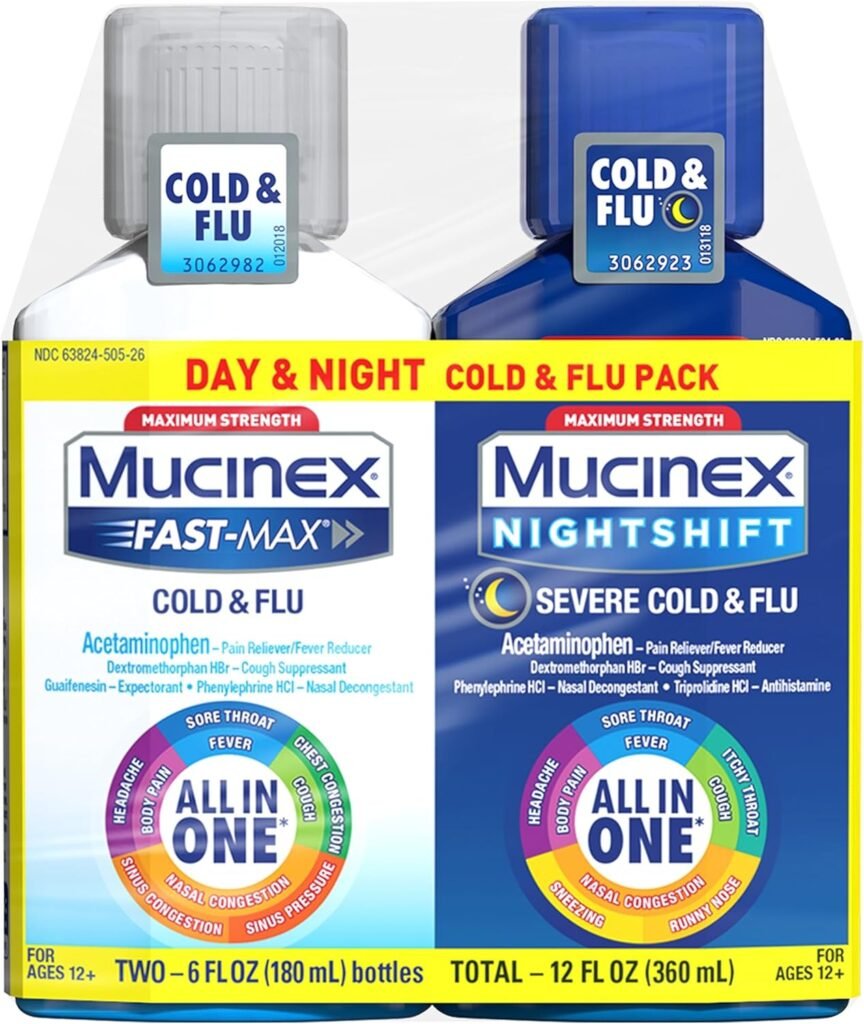What is the Common Cold?
The common cold is a prevalent viral infection that primarily affects the upper respiratory tract, leading to a range of symptoms that most individuals will recognize. This affliction is most commonly triggered by a variety of viruses, with rhinoviruses being the most notable culprits. These viruses invade the cells lining the nasal passages and throat, causing inflammation and eliciting a host of symptoms such as sneezing, nasal congestion, sore throat, and low-grade fever. Understanding the nature of colds is essential for differentiating between various respiratory illnesses.
Unlike influenza, which can also lead to upper respiratory symptoms but is typically more severe, the common cold is generally characterized by milder symptoms and a shorter duration. While flu may result in significant fatigue, body aches, and high fever, colds usually manifest with more localized symptoms that do not incapacitate individuals to the same extent. This distinction is crucial, as it influences treatment choices and patient expectations regarding recovery times.
The common cold, while seemingly innocuous, serves as a reminder of the myriad viral pathogens capable of affecting respiratory health. Awareness of the defining characteristics of colds—as opposed to other respiratory infections—is vital for effective illness management and prevention strategies in a public health context.
Origins and Transmission of the Cold Virus
The common cold is primarily caused by viruses, with rhinoviruses being the most prevalent among them. Understanding the origins and transmission of these viruses is crucial in managing and preventing colds. Cold viruses are omnipresent and can be found in the air, on surfaces, and in bodily fluids. They are easily spread from person to person, primarily through respiratory droplets that are released when an infected individual coughs, sneezes, or talks. These droplets can be inhaled by nearby individuals, leading to new infections.
In addition to respiratory droplets, colds can also be transmitted through direct contact with contaminated surfaces. For instance, if an individual touches a doorknob, computer keyboard, or any surface harboring the cold virus, and then touches their face, particularly their mouth, nose, or eyes, the virus can enter the body and cause infection. This mode of transmission highlights the importance of maintaining good hygiene practices, such as regular handwashing and surface disinfection, to mitigate the risk of catching a cold.
Seasonal changes also play a significant role in the prevalence of cold outbreaks. Colder months often see an uptick in cases, partly due to people spending more time indoors in close proximity to one another. Additionally, during these months, the humidity levels tend to decrease, leading to dry air, which can dry out mucous membranes and make individuals more susceptible to infection. Crowded environments, such as public transport, schools, and workplaces, further exacerbate the likelihood of transmission, as the close quarters facilitate the spread of viruses.
Certain risk factors may also increase an individual’s susceptibility to catching a cold. These may include a weakened immune system, lack of sleep, poor nutrition, and high levels of stress. Understanding these factors can help individuals take proactive measures to reduce their risk and improve their overall health during cold season.
Symptoms of the Common Cold
The common cold is caused by various viruses and manifests through several symptoms that typically emerge one to three days after exposure. Initially, individuals may experience a scratchy or sore throat, which is often one of the first signs of a cold. Following this, nasal congestion commonly develops, causing discomfort and making it difficult to breathe through the nose. Sneezing frequently accompanies this congestion, as the body attempts to expel the irritants.
As the cold progresses, other symptoms may arise, including a runny nose, where clear mucus may turn yellowish or greenish as the body responds to the viral infection. Coughing also becomes prevalent, ranging from a mild irritation to a more persistent condition, potentially disrupting normal daily activities and sleep. Additionally, headaches can occur, often resulting from sinus pressure or overall discomfort, while fatigue may be experienced due to the body’s efforts to fight off the virus.
The timeline of symptoms typically peaks between three to five days after onset, gradually subduing over the following week. It is important to differentiate between mild symptoms that can be managed at home and those that may necessitate medical attention. Individuals should consider seeking medical advice if they experience high fevers, symptoms that last longer than ten days, or severe headaches and difficulty breathing. Such conditions could indicate secondary infections or complications that require professional evaluation. Understanding these symptoms can aid individuals in identifying when to proceed with self-care or consult a healthcare provider, ensuring better management of the common cold.
Effective Treatments and Home Remedies for Colds
When faced with the discomfort of a cold, individuals often seek effective treatments to alleviate symptoms and expedite recovery. Over-the-counter medications serve as a popular choice for many. Decongestants, for instance, can provide relief from nasal congestion, allowing for easier breathing. Antihistamines, on the other hand, can help to reduce symptoms such as sneezing and runny nose, making them suitable options for managing cold symptoms. These medications can effectively address various aspects of a cold, although it is advisable to consult a healthcare professional, particularly for individuals with pre-existing health conditions.
In addition to pharmaceutical interventions, numerous home remedies can support recovery from a cold. One of the most widely recognized remedies is the use of honey, known for its soothing properties and potential to alleviate sore throats. Mixing honey with warm water or herbal tea can enhance its effectiveness while also promoting hydration. Similarly, ginger is another beneficial ingredient. Ginger tea, made by steeping fresh ginger slices in hot water, not only aids in hydration but also possesses anti-inflammatory properties that may help with throat irritation and digestive discomfort.
Maintaining adequate hydration is crucial during a cold. Increased fluid intake supports the body in flushing out toxins and alleviating irritation in the throat. Warm broths, herbal teas, and clear fluids can all contribute positively to this aspect of self-care. Equally important is the need for rest. Prioritizing sleep and downtime allows the immune system to function optimally, expediting the healing process.
To reduce the likelihood of contracting a cold in the future, individuals should focus on preventive measures. Practicing good hygiene, such as frequent hand washing and avoiding close contact with sick individuals, are effective strategies. Furthermore, strengthening the immune system through a balanced diet, regular exercise, and sufficient sleep reinforces the body’s natural defenses against cold viruses. Implementing these practices can significantly contribute to overall health and resilience.


